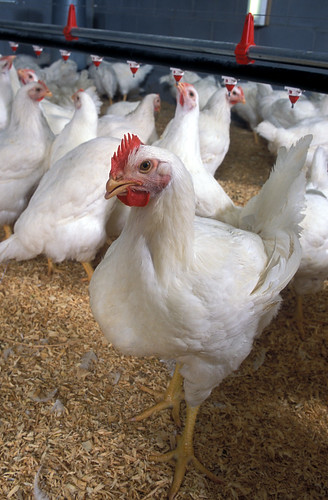
When cooking poultry, chefs know choosing the right bird will affect the outcome of a final dish. That’s why most recipes call for a fryer, roaster, or other class—terms based on the age and sex of the bird and printed on poultry labels. While breeding and raising practices have improved over the years, the definitions for these terms have remained roughly the same since the 1970’s.
Given these improvements in the industry, some broilers today may have characteristics that shoppers look for in roasters. To reduce confusion, USDA’s Food Safety and Inspection Service consulted with the Agricultural Marketing Service, the Food and Drug Administration, and the National Advisory Committee for Meat and Poultry Inspection to update the definitions for five poultry classes, lowering the ages at which poultry fits into these categories and adding weight requirements where needed.
The five updated poultry classes are as follows:
- Rock Cornish game hen or Cornish game hen: an immature chicken younger than five weeks old (previously five to six weeks), of either sex, with a ready-to-cook carcass weight of two pounds or less.
- Broiler or fryer: a chicken younger than 10 weeks old (previously younger than 13 weeks), of either sex, that is tender-meated with soft, pliable, smooth-textured skin and flexible breastbone cartilage.
- Roaster or roasting chicken: a young chicken between eight and 12 weeks old (previously three to five months old), of either sex, with a ready-to-cook carcass weight of five pounds or more, that is tender-meated with soft, pliable, smooth-textured skin and breastbone cartilage that is somewhat less flexible than that of a broiler or fryer.
- Capon: a surgically neutered male chicken younger than four months old (previously younger than eight months) that is tender-meated with soft, pliable, smooth-textured skin.
- Fryer-roaster turkey: an immature turkey younger than 12 weeks old (previously younger than 16 weeks) of either sex, that is tender-meated with soft, pliable, smooth-textured skin, and flexible breastbone cartilage.
To allow businesses time to come into compliance with the new guidelines, FSIS will begin enforcing the new labeling rules on January 1, 2014. Many businesses currently label their poultry according the updated class definitions, and enforcing the new rule will provide consumers with more uniform information about the characteristics of the poultry they purchase.
Consumers with questions about poultry classification or any related food safety topics are encouraged to call USDA’s Meat and Poultry Hotline at 1-888-MPHotline, open weekdays from 10 a.m. to 4 p.m. ET.
